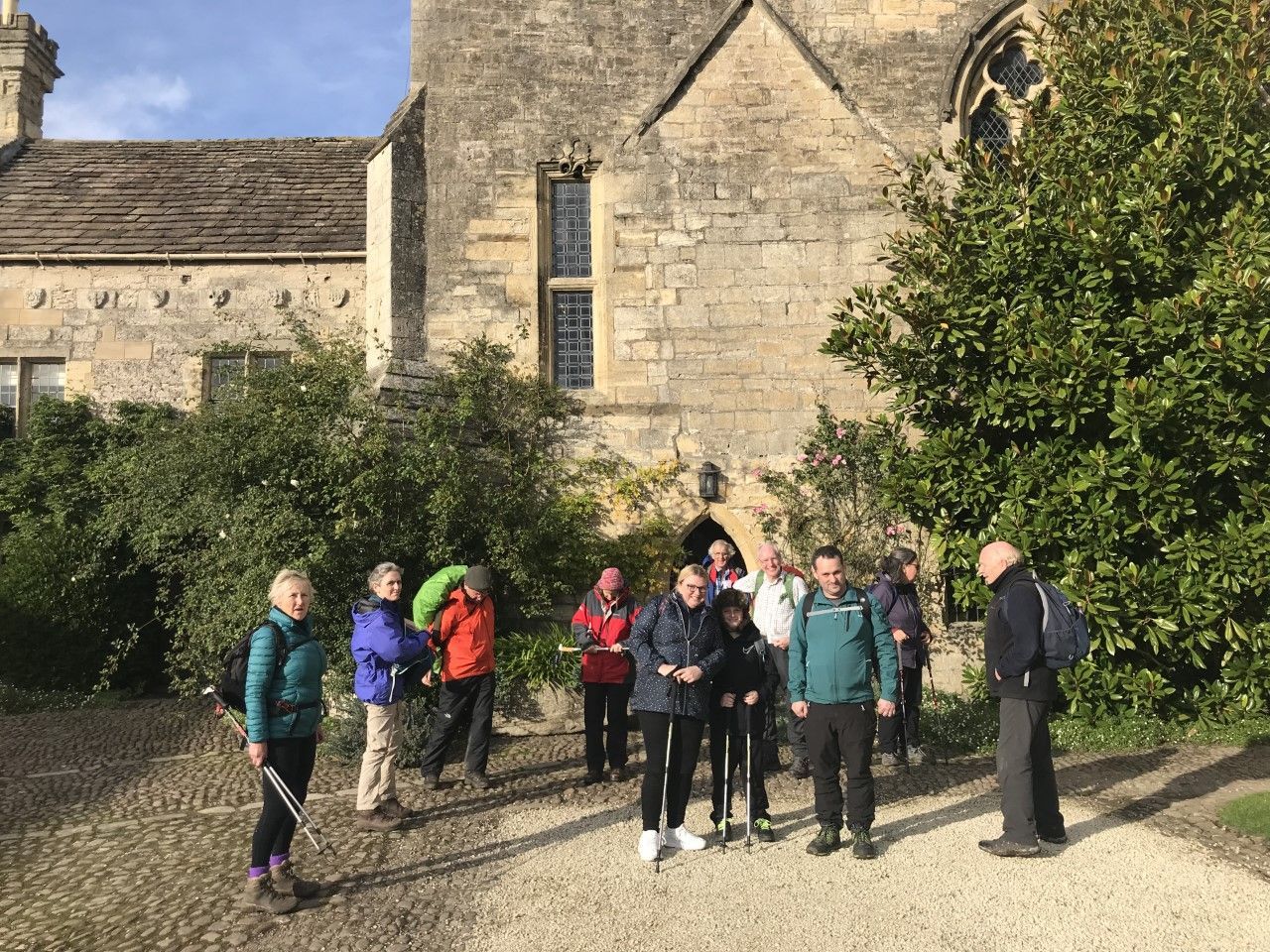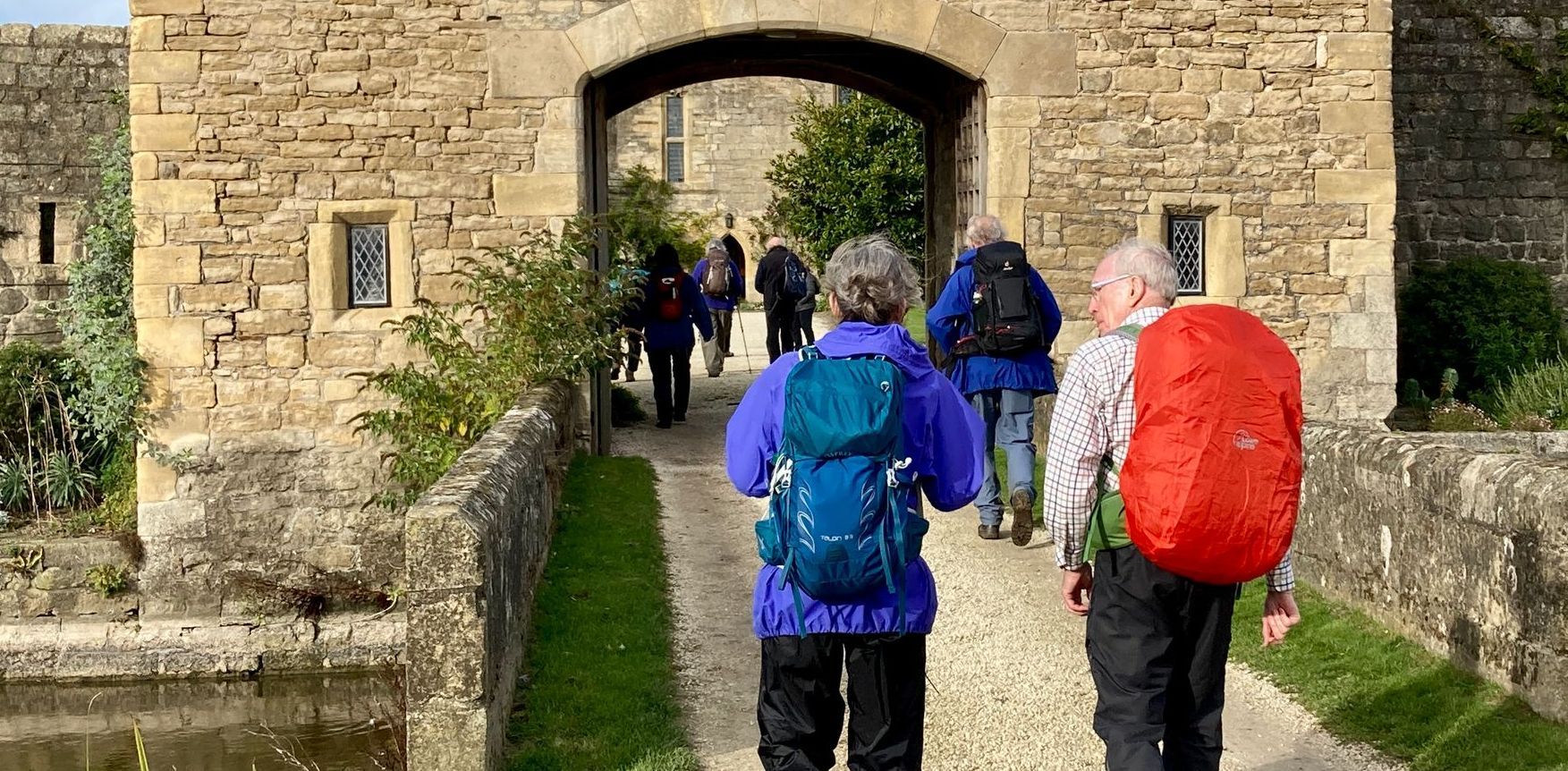BACKGROUND TO THE PROJECT
The aim of this three-year project is to promote walking pilgrimage within the
Catholic dioceses of England &Wales by developing and promoting Pilgrim Ways
between the cathedral of each diocese and one or more national or diocesan shrines within that diocese.
The Ways will be an opportunity for Catholics and other Christians to deepen their faith
and for people of all faiths and none to share the experience of walking a pilgrimage in a Catholic context.
The Aim

Pilgrimage is an element of many religions and cultures, but it is always a journey to a place of special significance for the pilgrim. It involves someone stepping out of their daily routine to reflect on the meaning and purpose of their life and to open themselves to personal transformation.
A walking pilgrimage is a slow journey in direct contact with the earth. On foot a pilgrim is vulnerable to the elements and may experience solitude as well as companionship and encounters with strangers. Walking pilgrimage tends to lead to a humble acceptance of our fragility and transience in this world.
A key feature of pilgrimage is intention. This might be a personal intention such for for healing of a broken relation. It might be for another person, perhaps in memory of a beloved person who has died or a particular saint. It might be for a comminity such as a parish or a school. It might be for a cause like homelessness or simply to give glory to God for the wonder of creation.
In Catholic understanding, pilgrimage is a search for God, even if we are not fully aware of it. As Pope Benedict XVI put it:
“To go on pilgrimage is not simply to visit a place to admire its treasures of nature, art or history. To go on pilgrimage really means to step out of ourselves in order to encounter God where he has revealed himself, where his grace has shone with particular splendour and produced rich fruits…”

The English word comes from the Latin peregrinus which means a stranger or foreigner, someone passing through, or someone settling for a period in a foreign land.
Pilgrimage was a vibrant part of the lives of people in medieval England and Wales as Geoffrey Chaucer’s Canterbury Tales, written between 1387-1400 demonstrates. Canterbury and Walsingham became two of the most important shrines in Europe.
In 1538 pilgrimage was banned by Henry VIII through a Royal Injunction. The monasteries which had provided shelter to pilgrims were dissolved and many of the shrines which had been the destination for pilgrims were destroyed. Despite this English and Welsh Catholics went on pilgrimage as and when they could. In Protestant imagination pilgrimage was transformed into a metaphor for life’s journey, as John Bunyan’s Pilgrim’s Progress (1678) brilliantly shows.
As the oppression of the Catholic faith receded during the 19th Century pilgrimage became possible again, and in 1897 pilgrimages to Walsingham restarted. A national shrine was established there in 1934. Despite this when many people think of pilgrimage today it is often abroad and by air: Lourdes, Rome, Santiago and the Holy Land. Pilgrimage to shrines in our own nation is often by car or coach.
More information about the history of pilgrimage can be found by clicking on the button below,

Over the last few years there has been an upsurge of interest in pilgrimage in secular society as many TV programmes, films and books demonstrate. Across Europe as church-going has declined, pilgrimage-going has increased. For example, few people walked the Camino to Santiago in the 1980s, but before the pandemic 300,000 people were making their way to the shrine annually.
In the UK many new pilgrim ways have been established. The Centre for Pilgrimage Studies was founded at the University of York in 2012 to strengthen communication and collaboration between the growing numbers of researchers, scholarly networks, and pilgrim organizations around the world. It aims to provide access to pilgrimage-related research and resources, to publicise conferences and other events, and to encourage new research projects. The British Pilgrimage Trust was formed in 2014 to promote pilgrimage in Britain by helping to develop and publicise new and old paths as well as the practice of pilgrimage itself by making it open to all.
This project aims to recover something of what was lost in 1538: a practice of walking pilgrimage to Catholic shrines in England & Wales. The project is timely for several reasons. Walking pilgrimage is a good way reconnecting with our landscape and with each other after the Covid-19 pandemic. The difficult current economic circumstances make low budget pilgrimage attractive and a contribution to rebuilding sustainable local tourist economies. Global warming means we should avoid international travel when we can.

Pope Francis has said of pilgrims:
“Whoever they may be — young or old, rich or poor, sick and troubled or curious tourists — let them find due welcome, because in every person there is a heart in search of God, at times without being fully aware of it.”[1]
The title of this project is taken from this quotation.
In 2017 Pope Francis issued a document called Santuarium in Ecclesia which emphasised the importance of shrines and pilgrimage in the life of the Church. He called for pilgrims to be offered along their journey:
“a consistent and sustained spiritual and ecclesial service that allows a truly personal experience[2]”.
Pilgrimage offers the potential for spiritual growth, and for the experience of the Church. One of the aims of the Project is to encourage a welcome from Catholic parishes and others along the Ways. The 2025 Holy Year has the motto Pilgrims of Hope, and so the project is timely.
[1] Pope Francis, address to those engaged in pilgrimage work and rectors of shrines, 21.01.2016 (my italics)
[2] Pope Francis, Santuarium in Ecclesia issued moto proprio 11.02.2017


